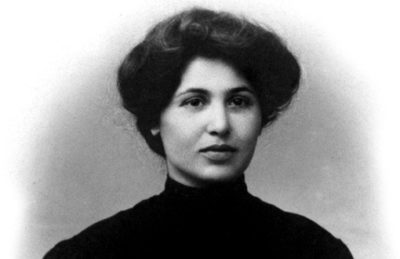The Society for Armenian Studies announces the release of Volume 28, Issue 2 (Fall 2022) of the Journal of the Society for Armenian Studies (JSAS), edited by Dr. Tamar M. Boyadjian (Michigan State University), editor-in-chief, and Dr. Rachel Goshgarian (Lafayette College), the Reviews and Reconsiderations editor on the theme of Armenian women in theater, cinema, and music.
“Performance II builds on themes of reticulated networks in the performing arts, while at the same time challenging the traditional models of how performance has been evaluated in the past. The contributions in this volume make intentional efforts to re-qualify the registers and frameworks in which the questions around performance and memory, identity, and the body — particularly the female body — have been previously analyzed,” wrote Boyadjian.
Under the title “Performance, Memory, and the Archive,” the volume begins with a conversation with Arsineé Khanjian, detailing how performances can open avenues for thoughts on memory and archive, Armenianness, cultural and diasporic identity, the female body, and political engagement. Khanjian’s “Auctions of Souls. Performing Memory,” is based on the life of Armenian Genocide survivor and American early cinema actress, Aurora Mardiganian, whom Khanjian successfully highlights in a “idiosyncratic artistic approach” by using images, scenes and passages from multiple sources.
Khanjian argues the performance’s contemporary relevance by showcasing how the context of the Armenian genocide continues to present itself in current social, ethical, and geopolitical issues present today. The conversation is followed by the section titled “Between Activism & Authorship: Thoughts & Translations on Zabel Yesayan.”
The first article in this section by Talar Chahinian follows a collection of think-pieces that intersect with “dual performative acts of iconification and translation,” which frame the approach to understanding Yesayan in the last several decades. The collection of thoughts and translations, search to find and define Yesayan as a writer, activist, and feminist amongst contemporary debates while “ultimately guiding the reader back to her own words.”
The second article by Maral Aktokmakyan examines problematic interest in the work of Yesayan and the broader question surrounding the fate of Armenian literary studies and criticism. Aktokmakyan argues that the growing craze for “feminist Yesayan” has a problematic reductive and teleological approach, which nearly disregards Yesayan’s work. Instead, Aktokmakyan promotes a “rhizomatic reading that would liberate the author from overloaded feminist and genocide- based readings.”










